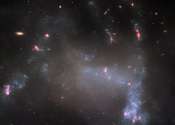Image: Hubble finds a field of stars
This image from the NASA/ESA Hubble Space Telescope shows a globular cluster called NGC 1651. Like another recent globular cluster image, NGC 1651 is about 162,000 light-years away in the largest and brightest of the Milky ...









